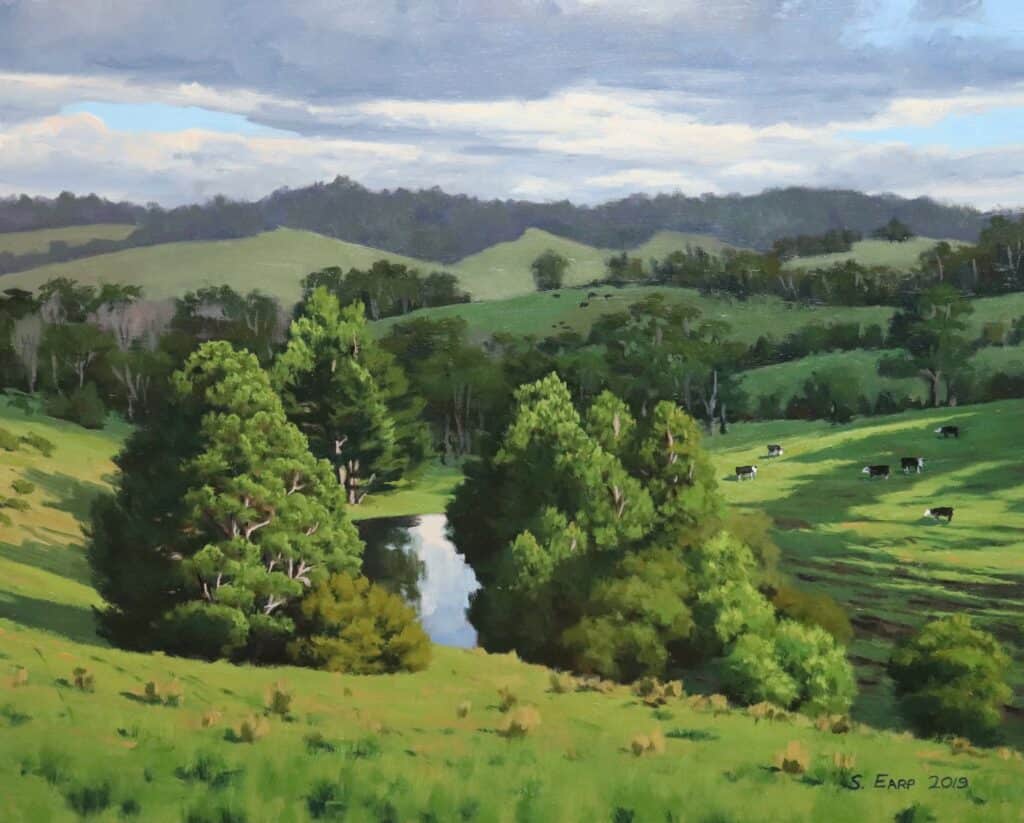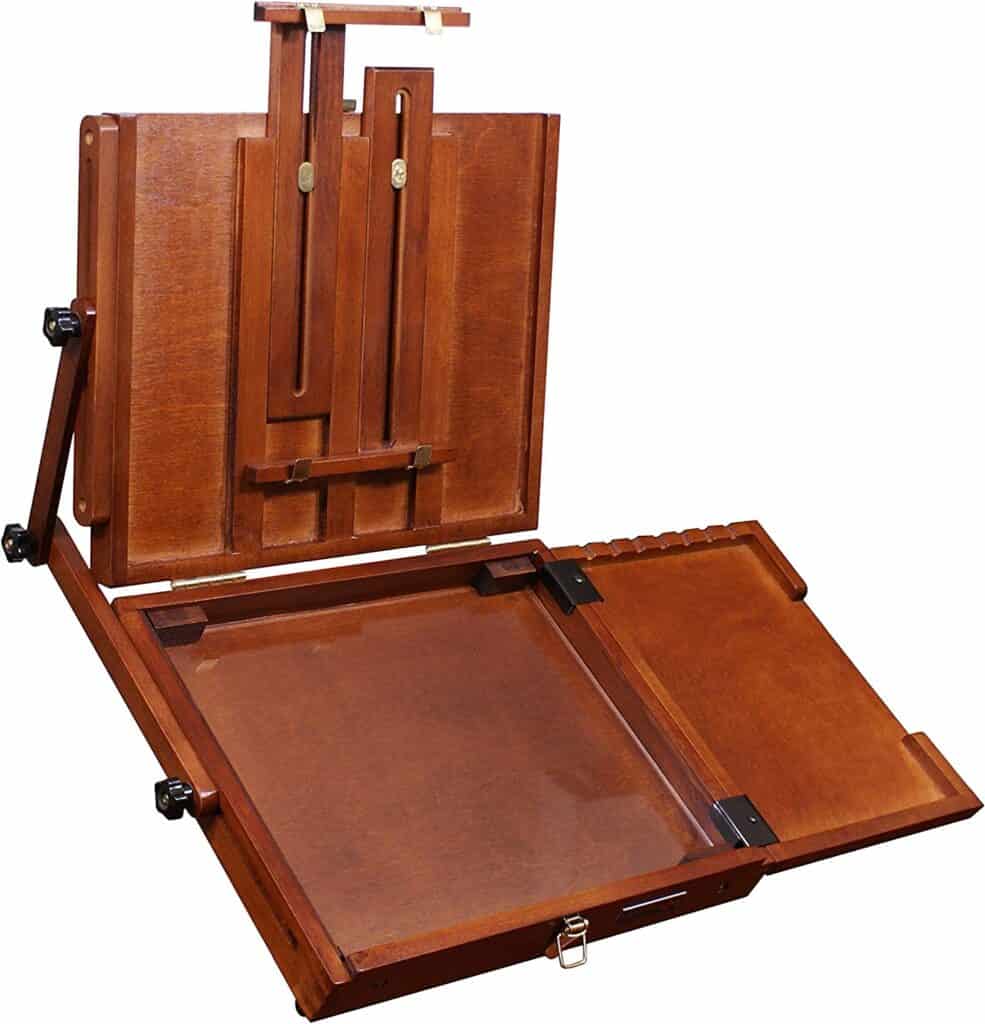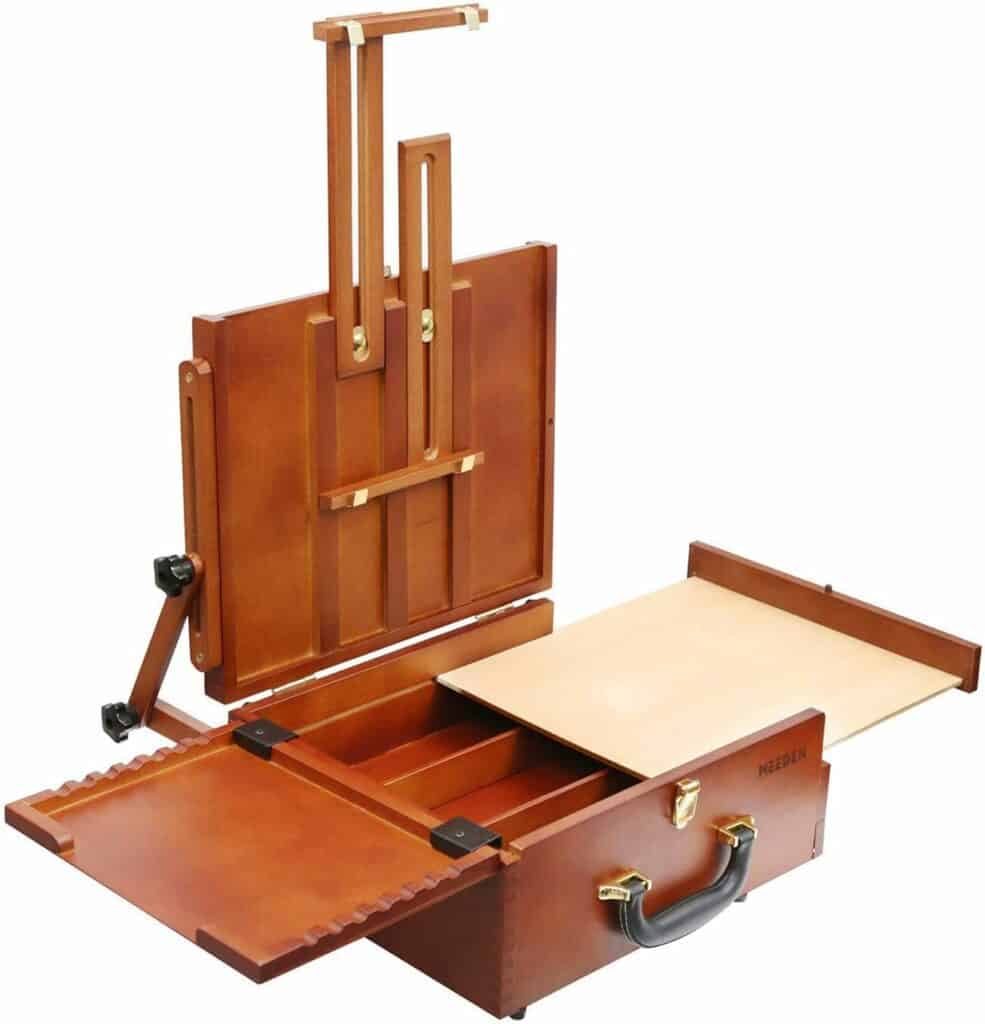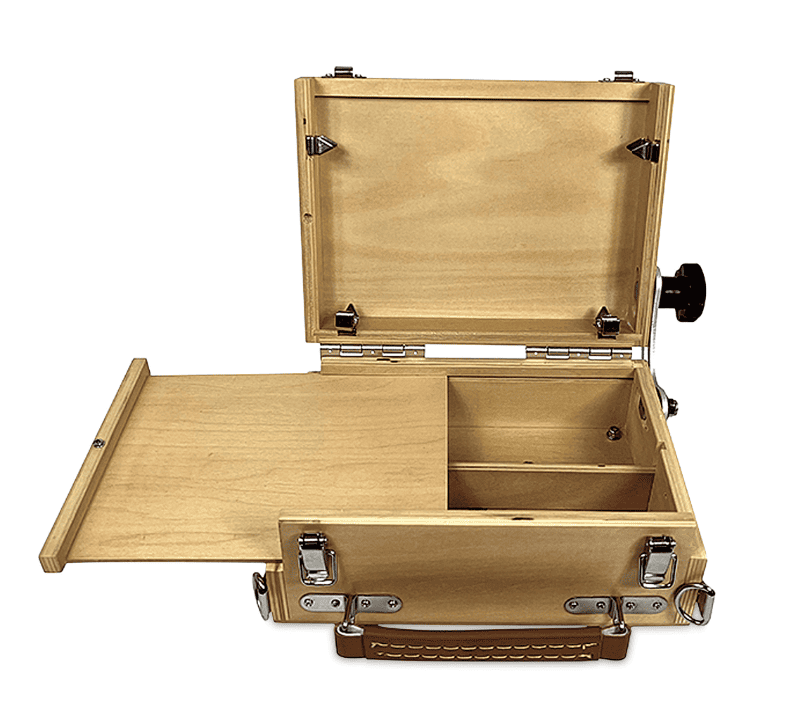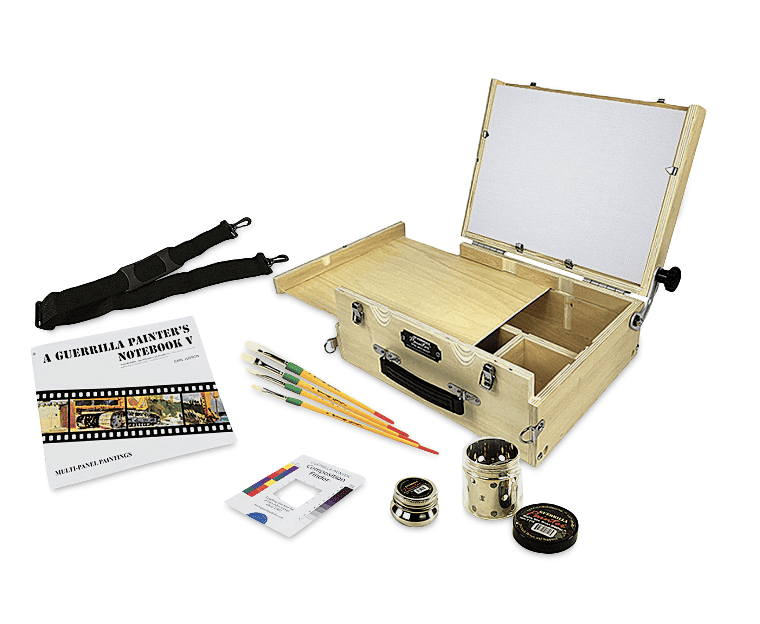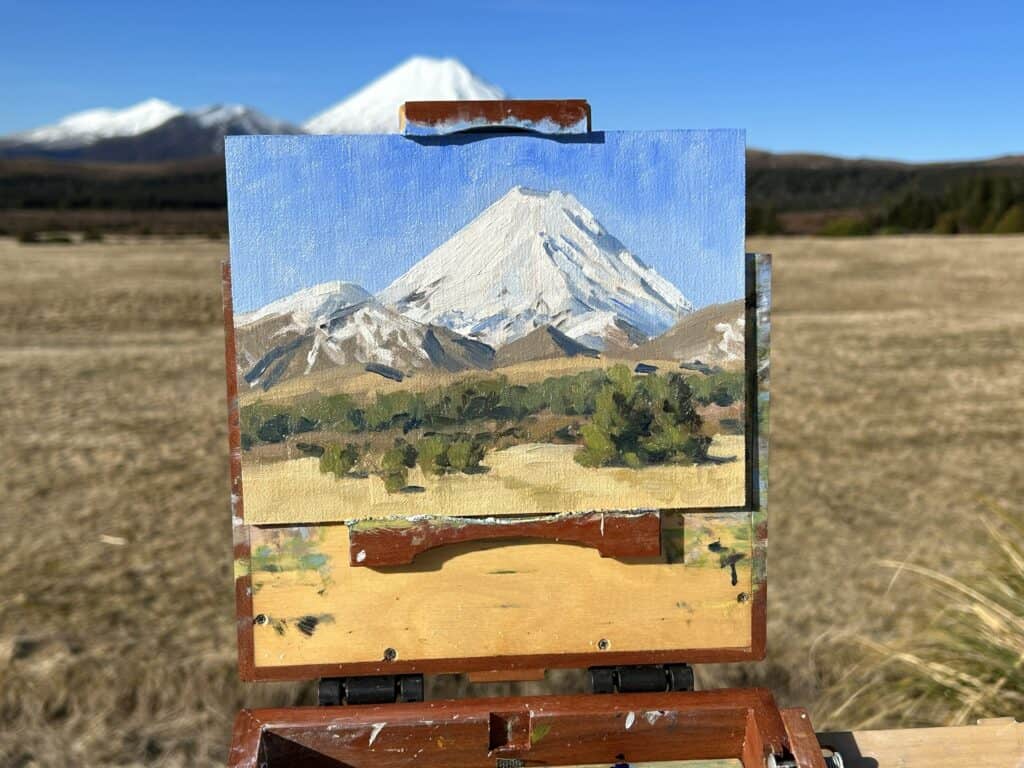
I love plein-air painting; for me, it is like a visual diary of my life of some of the places I have been to, and it has accelerated my painting skills. If you’ve ever wanted to turn your art into a beautiful outdoor experience, plein-air painting is the way to go.
When I started plein air painting in 2015, I realized its benefits to my painting process. Since then, I have been hooked!
In this article, I give you an overview of how to start plein air painting and how it differs from traditional studio painting. I also take you through some basic supplies you need to get started and tips for making your first line of plein air paintings successful.
Whether you’re an aspiring artist looking for something new or a creative eager to discover the secrets of painting on location, this beginner’s guide is for you.
What is Plein Air Painting?
Plein air painting is a French expression that means “in the open air.” It refers to painting outdoors, in direct contact with nature and the elements.
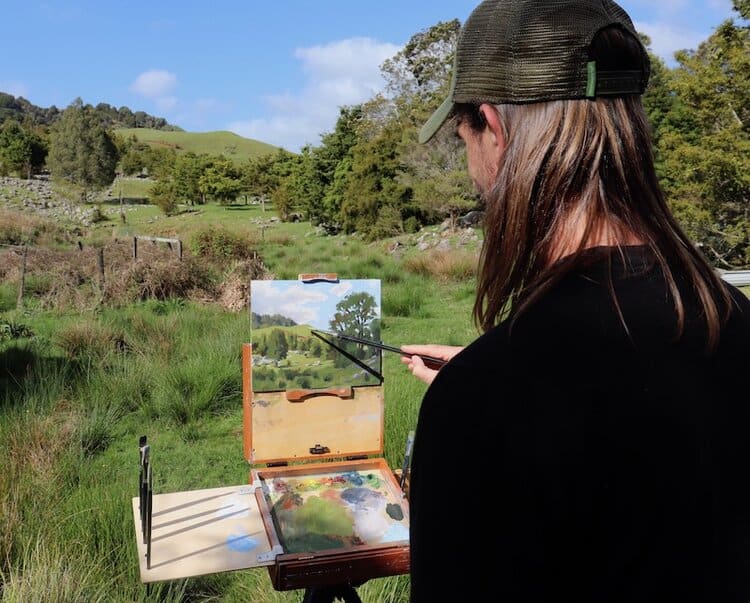
This painting style is often associated with landscape painting, as its a simple subject that provides an opportunity to capture the beauty, detail and essence of natural surroundings. Typically painting plein air involves completing the artwork in one sitting, known as painting ‘alla prima’.
Plein air painting can be challenging, as light and weather conditions can impact your painting rapidly. One minute you could be painting in glorious sunshine; the next, it starts raining, and a gale-force wind blows over your easel, ruining your painting! It has happened to me on a few occasions!
Painting outdoors requires the artist to work quickly and adapt to the environment. However, it is also a great way to practice your art and develop your skills, allowing you to observe and interpret the landscape uniquely.
I think of plein air painting as a way to fast-track your painting skills. Whether you are a seasoned painter or a beginner, trying your hand at plein air painting can be a rewarding and fulfilling experience.
The History of Plein Air Painting
During the mid-1800s, the advent of portable paint tubes and easels made it easier for artists to venture out of their studios and engage with nature on a more direct level. This shift from studio-bound creations to open-air experiences marked a significant departure from traditional approaches to art.
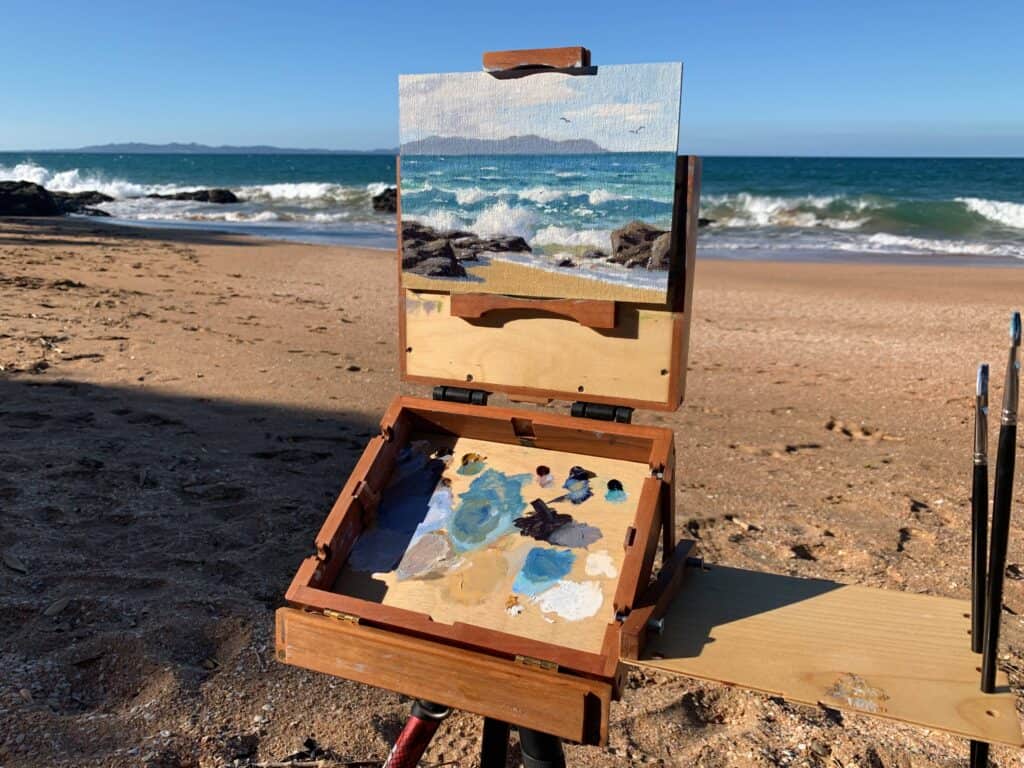
Plein air painters sought to capture the essence of a scene in its natural state, embracing the imperfections and spontaneity that come with painting outdoors.
The French Barbizon School and the Impressionists were among the first groups to fully embrace plein air painting. Artists like Jean-Baptiste-Camille Corot and Claude Monet ventured into the forests and fields, seeking to capture the play of light and shadow on the natural world.
The allure of the plein air movement was not limited to France alone. It gained popularity in other parts of Europe and eventually made its way across the Atlantic to the United States.
Today, plein air painting continues to thrive as a beloved artistic practice and is growing in popularity. Its historical significance resonates with modern artists, who strive to preserve the tradition while adding their unique perspectives and techniques.
ARE YOU STRUGGLING WITH YOUR PAINTING?
JOIN MY ONLINE ART SCHOOL AND UNLEASH YOUR INNER ARTIST.
- Step-by-Step Painting Tutorials
- Helpful Tips and Techniques
- In-depth lesson notes
- Inspiring reference photos
- Instant access to all content, including videos, lesson notes, reference photos and more.
- A vibrant and friendly community, meet other members, ask questions, and share your art.
- Zoom meetings for Q&A’s, painting critiques and painting livestreams.
- Ideal for beginners and experienced painters.
- Lots of inspiration, help and support to take your painting skills to the next level.
Why Paint Outdoors?
When it comes to painting, there is nothing like painting outdoors. You get to be outside in the fresh air, often admiring a beautiful landscape. For me, I love painting my subject direct from life, and it gets me out of the studio once in a while.
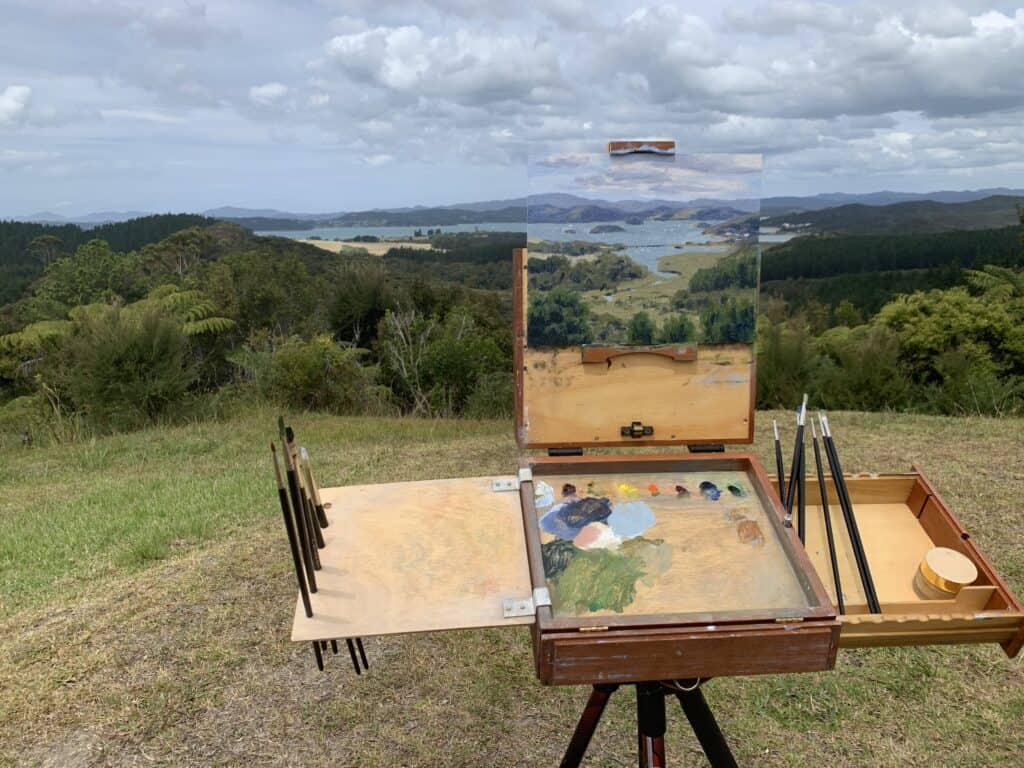
Another advantage of plein air painting is the development of your artistic process. Taking your artistry outside to paint en plein air offers unique opportunities for growth and inspiration as an artist. When I started painting outdoors, I picked up many tips that I would have needed help finding within the confines of a studio.
When you paint outdoors, you’re engaging directly with the multifaceted beauty of the natural world. The changing light, the fluctuating weather, and the vitality of the landscape can breathe life into your work in ways that photographs or indoor sessions can’t replicate.
Another massive benefit of painting outdoors is that it teaches you to paint quickly and gives you more confidence. These skills transfer to studio painting, and I have greatly improved my pictures.
Painting Outdoors vs Painting in the Studio
One of the main advantages of painting outdoors is the opportunity to observe and interpret nature firsthand. Being physically present in the landscape allows us artists to experience its sights, sounds, and even changing weather conditions.
This direct connection with the surroundings often leads to a more genuine and authentic representation of the subject matter. The play of light, the movement of shadows, and the ever-shifting colors become tangible, enhancing the overall aesthetic of the artwork.
Additionally, painting en plein air offers a unique challenge that pushes artists to work efficiently and make quick decisions, which has helped progress my studio work. However, unlike in a controlled studio environment, where artists have the luxury of time and resources, outdoor painting requires adaptation and responsiveness.
How to Get Started with Plein Air Painting
If you have never painted outside before, plein air painting can seem daunting for beginners but worry not. Here are some helpful tips to guide you and to let you know what to expect:
Choose a Portable Easel: A lightweight, compact easel or pochade box is necessary for plein air painting. The easel should be sturdy enough to withstand winds and user-friendly for quick setup and tear down.
Pack Essentials Only: Only bring the colors and brushes necessary for your painting. A smaller palette can encourage simplicity and help you focus on the scene’s essence. This is why using a limited palette is helpful.
Bring a Sketchbook: A sketchbook is helpful for planning your composition before committing it to canvas. A quick two-minute sketch can help you understand the scene better before you start painting.
Be Prepared for the Weather: The elements can affect your painting process. Know the weather forecast and prepare accordingly. Bring a hat for the sun, a coat for the cold, and an umbrella for potential rain.
Embrace Change: The lighting and scene will change as you paint. Instead of fighting it, embrace it. This makes plein air painting unique and offers a dynamic quality to your work.
What Supplies Do I Need for Plein Air Painting?
Before heading out into the great outdoors, having the essential materials and equipment is necessary.
Field easel
First, you’ll need a pochade box or a lightweight easel and something sturdy to mount it on. Trust me; you don’t want your masterpiece blowing away in the wind. Speaking of wind, a sturdy tripod is a must if you are using a pochade box to keep your setup from toppling over.
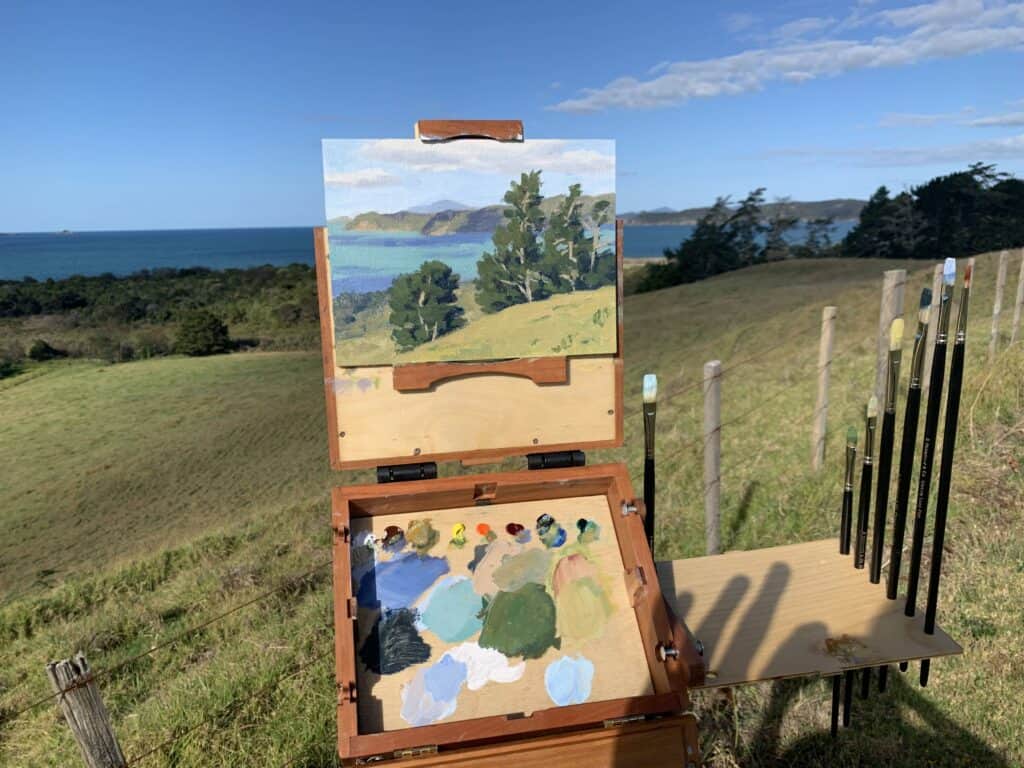
I prefer using an Alla Prima Pochade Box. Regardless, a lightweight, portable easel will allow you to paint comfortably in various outdoor locations, whether on a rugged mountain trail or a serene coastal beach.
Buy a Pochade Box Online
Paint and Brushes
Next, consider the type of paint and brushes you’ll be using. I always recommend artist-grade paints with a vibrant color range and lightfastness. You will also need different sizes and canvas brushes to paint on. I prefer to use linen canvas panels as they are robust and ideal for outdoor painting.
Other Essentials to Take With You
Lastly, pack essential accessories like a water container, paper towels or rags for cleaning brushes and palette, and a sketchbook for preliminary sketches and notes. These tools will assist you in capturing your initial observations and translating them onto your canvas.
Choosing the Right Brushes
When painting outdoors, you want to capture the essence and atmosphere of the landscape in front of you, so it is better to paint quickly and expressively apply brush marks.
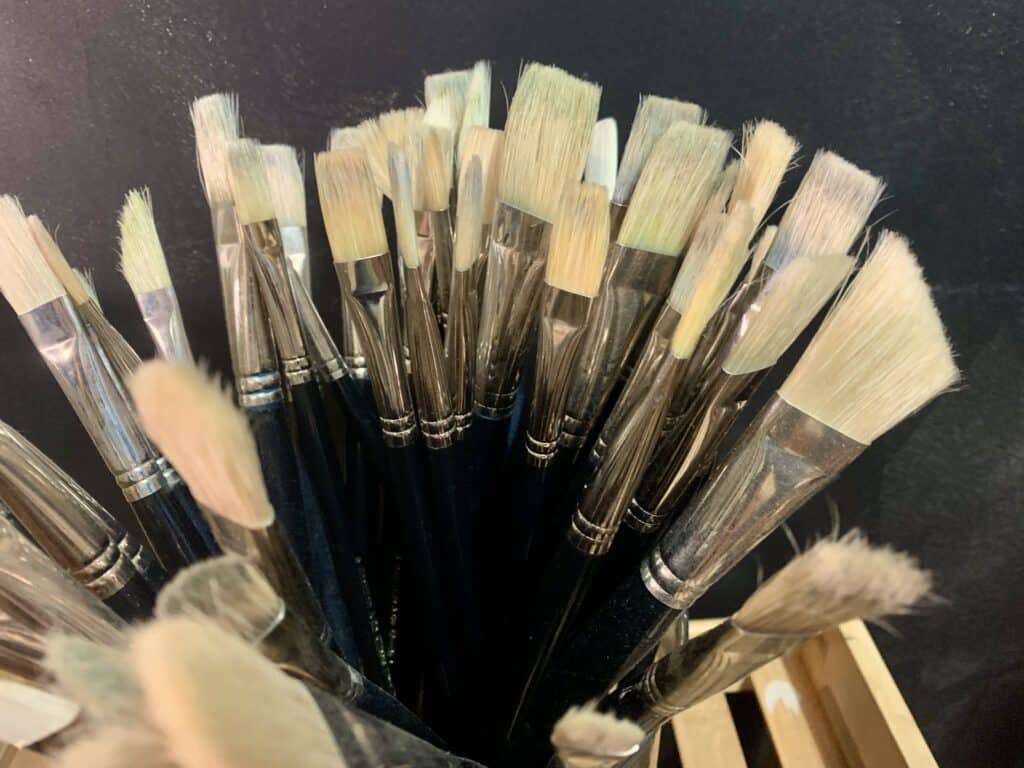
When I paint outdoors, I use the biggest brushes I can get away with for a more loose painterly effect. This also allows me to paint quickly. I mostly use bristle brushes, ideal for oil and acrylic paints. They offer good paint-carrying capacity and can create beautiful textures.
I use synthetic bristle brushes for finer details. Synthetic brushes are also better suited for painting in watercolors as they have a smoother surface and retain their shape even when wet.
Brush Sizes and Shapes
The following is a list of recommended brushes that I use for plein air painting. These brush sizes range from No.5 to No.0
Flat brushes: ideal for expressive brushwork
Filbert brushes: rounded edges are suitable for finer marks
Round brushes: good for details
Dagger brushes: great for a variety of textures
Rigger brushes: Excellent for fine detail
Get Your Free eBook
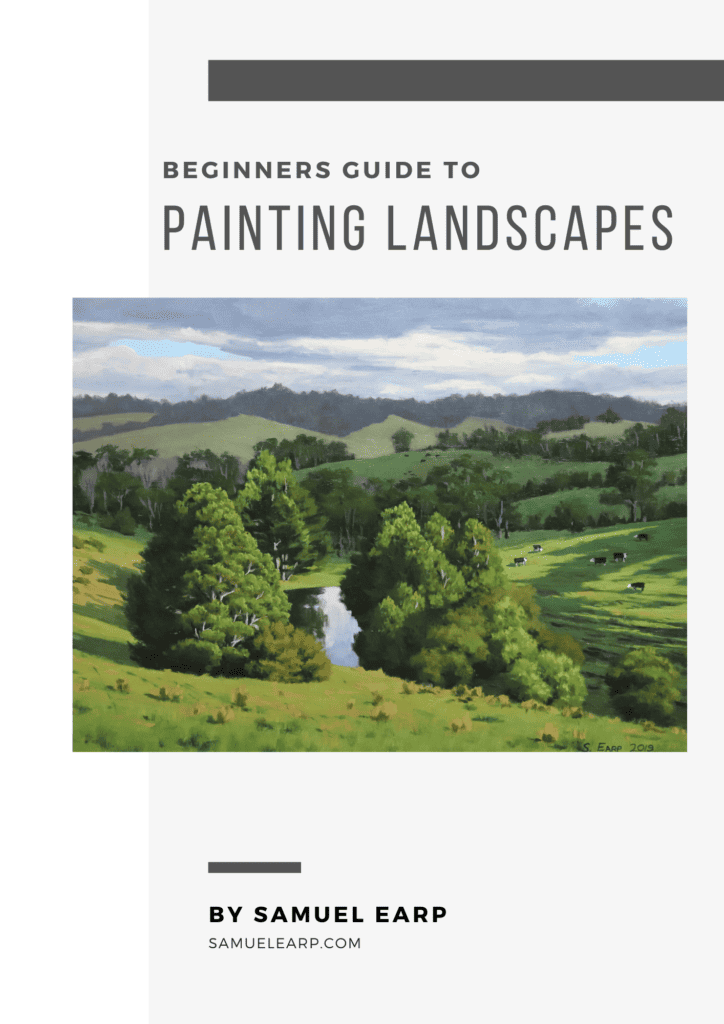
Choosing the Right Paints
Always invest in artist-quality oil paints if you’re working with oils. Check out this article if you are wondering why you should always use artist-grade oil paint instead of student paints.
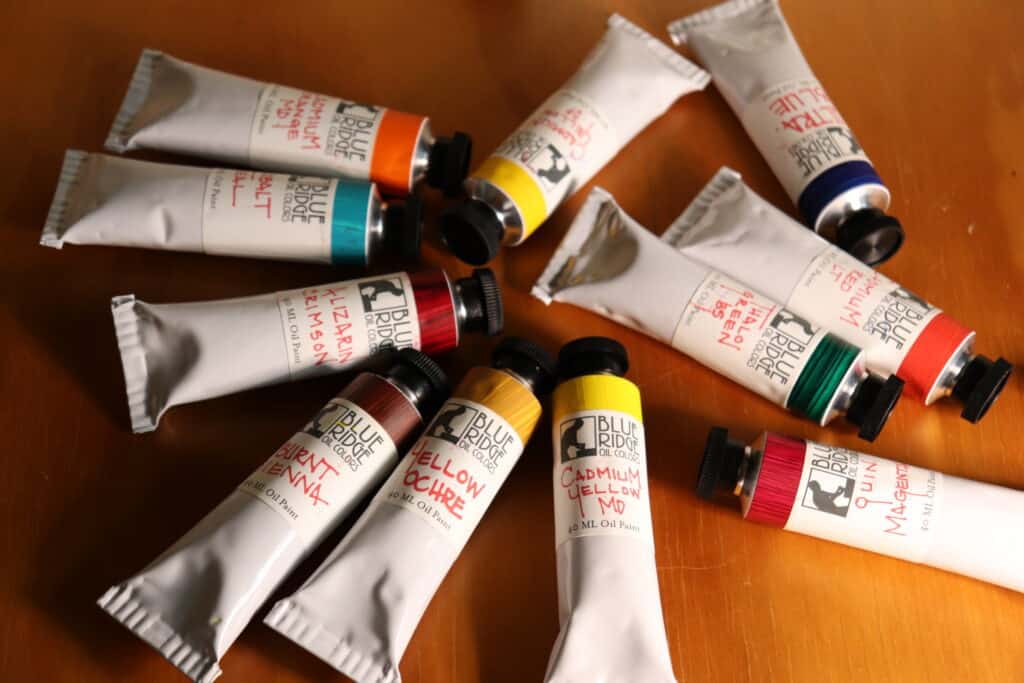
I use a limited palette of colors when painting en plein air. The colors I recommend for plein air painting include:
Titanium white
Burnt sienna
Yellow ochre
Cadmium yellow
Cadmium red light
Alizarin crimson
Ultramarine blue
Thalo green
Choosing the Right Painting Surfaces for Plein Air Painting
Canvas panels are a popular choice for many plein air artists, and this is what I use for plein air painting. Lightweight and easy to transport, these panels provide a rigid, stable surface under varying weather conditions.
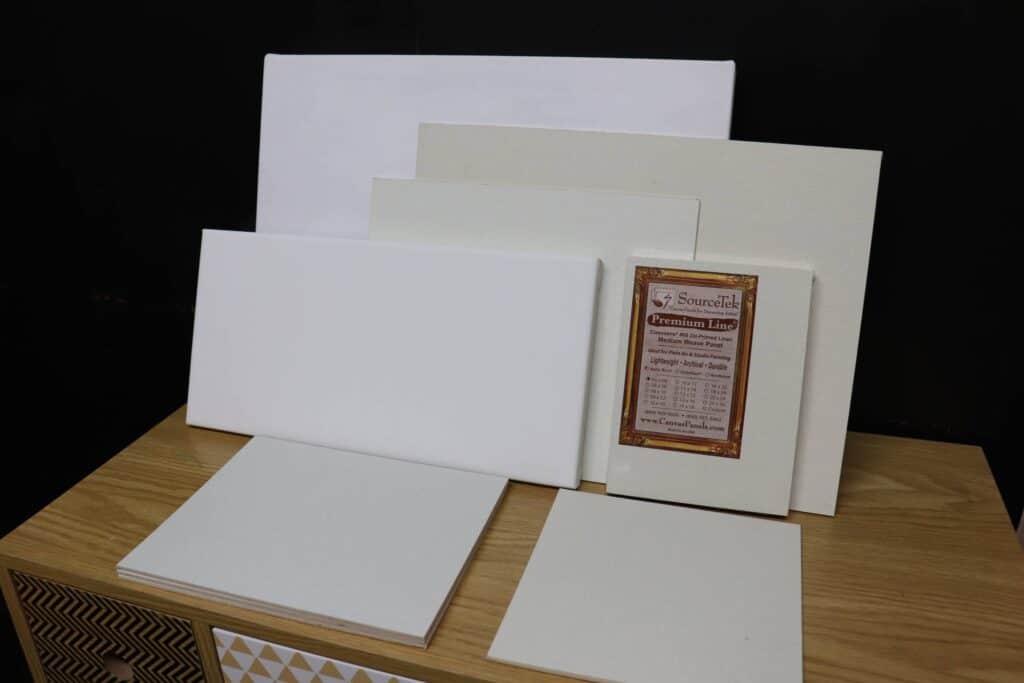
You can also use loose canvas and tape it to a board, which many plein air painters do. The advantage of this is you can choose the size of the painting you want.
Whilst I prefer to paint on a white canvas, many artists like to tone their painting surfaces with a thin layer of burnt sienna or burnt umber. The toned underpainting helps to warm up the painting as it comes through the first paint layer or layers.
When painting outdoors, avoid having direct sunlight on your painting surface. Instead, have your canvas in shadow, as your colors will look much more vibrant and you won’t get glare from the sun on your painting surface.
The Best Medium to Use for Plein Air Painting
As I paint with oils when I paint plein air, I have found using a medium called Liquin Original most advantageous. Using Liquin thins the paint and speeds up the drying time. When using Liquin, it very often dries a little, especially if the weather is warm. This can be helpful for adding more details to your painting when it is nearing completion.
Selecting the Perfect Spot
When it comes to plein air painting, choosing the perfect painting location can make or break your piece. You want to find a spot with good lighting and an inspiring view that will captivate you and your audience.
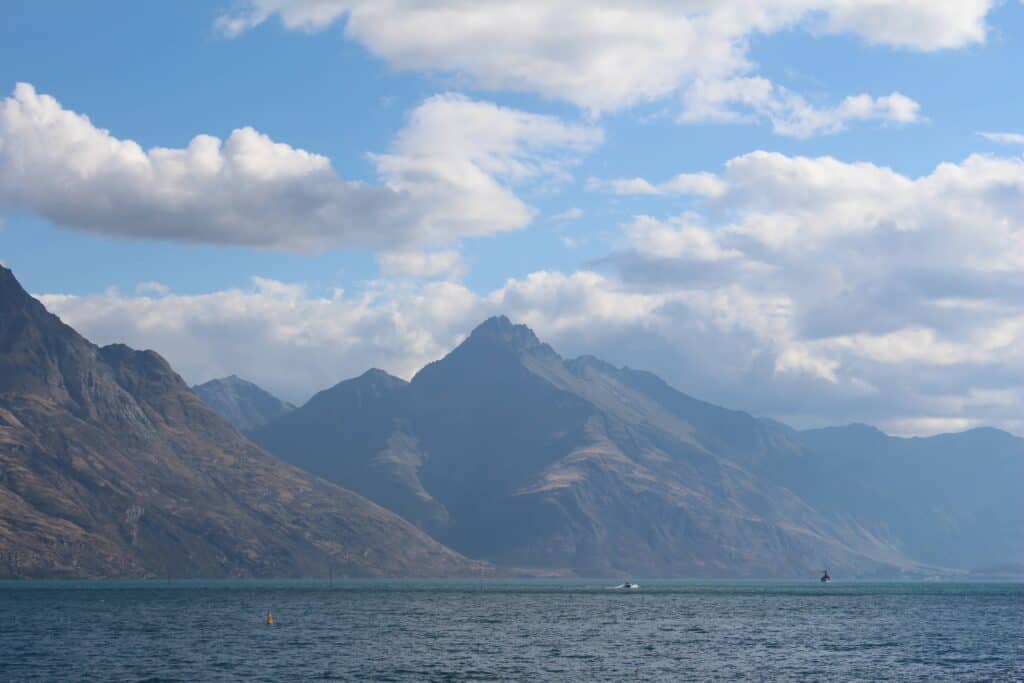
Considering the landscape, weather conditions, and how the light and shadows play on your subject, finding the right location can set the tone for your entire painting session.
Another consideration for outdoor plein air painting experience is that you can paint somewhere without many people, especially if you are new to plein air painting techniques and want to build up your confidence.
Find the Right Time of Day to Paint
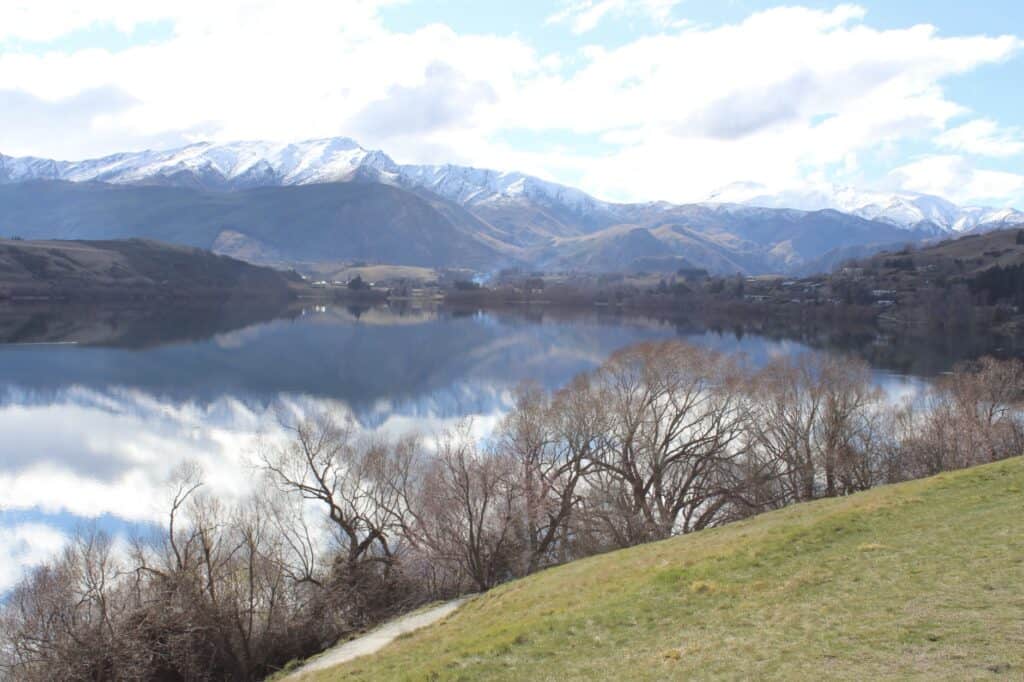
There’s something special about plein-air painting; being outside and surrounded by nature enhances the creative process. But you must choose the right time of day to get the full experience.
The light and shadow of the sun can transform colors and affect the mood of your painting. For example, suppose you’re looking for dramatic shadows. In that case, painting during the early morning or late afternoon hours might be the best time for you.
Looking at the shadows in the landscape
When I begin a plein air painting, I first observe where all the shadows are in the composition of the landscape. When you start painting outdoors, take a moment to study the shadows cast by different objects in your scene.
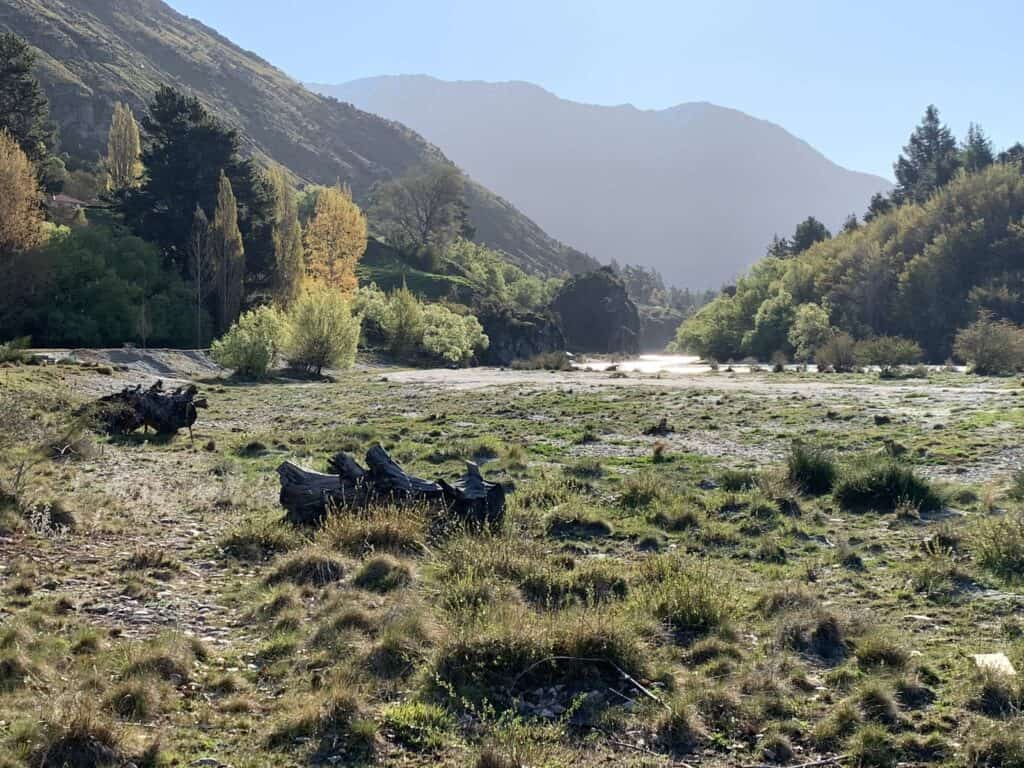
Shadows are not simply an absence of light; they play a crucial role in defining the form and structure of the landscape. Observe how the shadows fall and interact with the surrounding elements. Note the variations in their shapes, lengths, and intensities.
Paint Your Dark Values and Shadow First
Landscape painting is about capturing nature’s essence and its ever-changing light and shadow. When you paint outdoors, you must consider that the light and weather conditions will change.
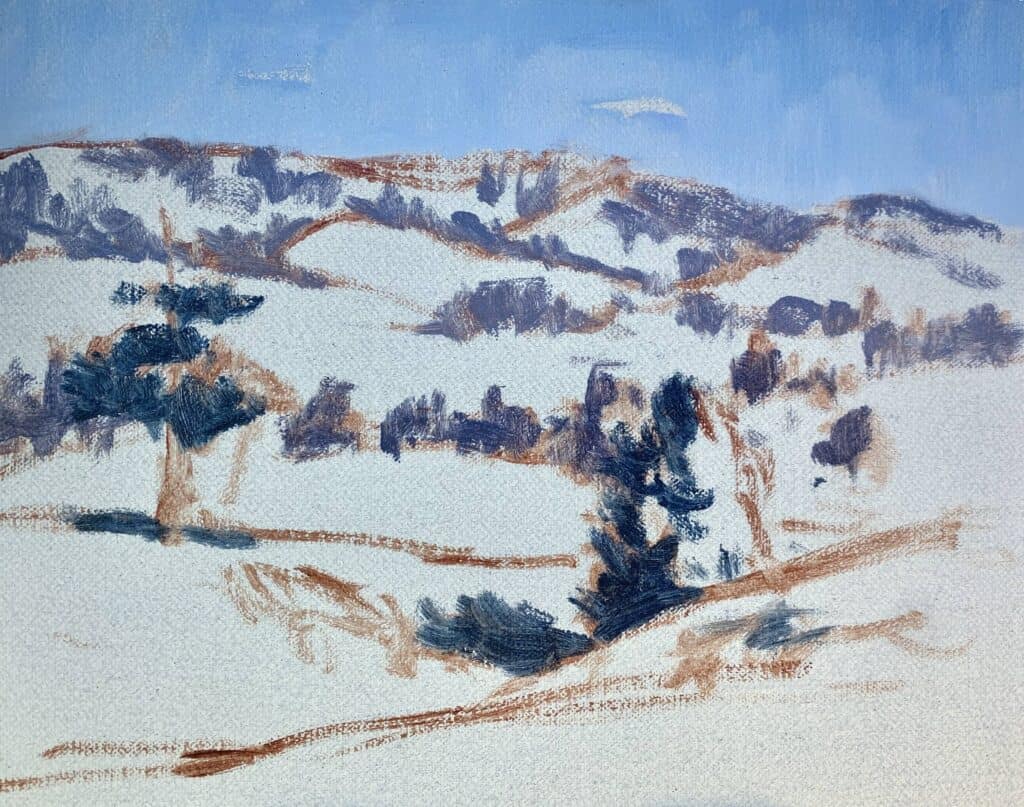
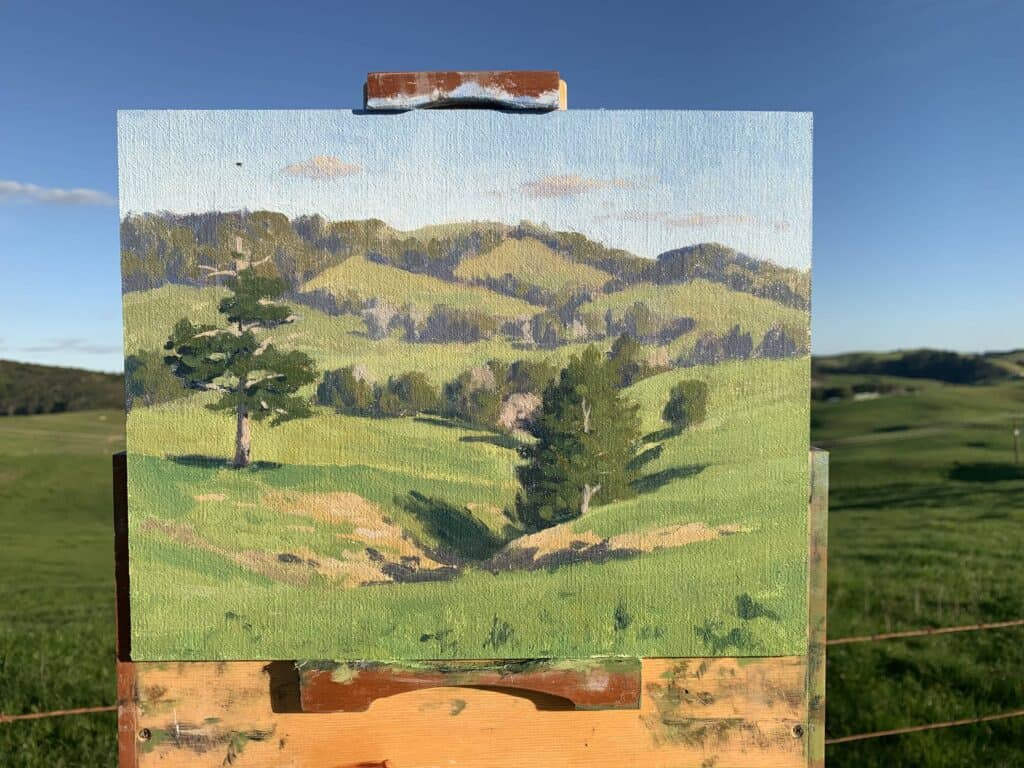
One technique is to start painting with the darkest values first, particularly the shadow areas, instead of the lightest light. By doing this, you establish a tonal dynamic in your painting from the get-go, and then it doesn’t matter if the light or weather conditions change.
When you first paint the dark values in the landscape, it is much easier to paint the areas in light afterward. It also makes it easier to get the color saturation correct as well.
Why You Need to Paint Quickly
Dealing with fast-changing light is part of the challenge in landscape painting. You need to quickly capture the moment and adapt your technique as needed. This comes with practice and brush mileage.
When painting quickly, paying attention to the details is also essential. Before you start painting, take the time to observe the scene’s light and shadows, colors, and textures. Try breaking down the landscape into its basic shapes and simplifying them as much as possible. This will help
By learning to paint quickly outdoors, this skill has given me more confidence. It has allowed me to also paint quicker in my art studio, saving time on larger studio paintings.
Expressive Brushwork
The ability to paint quickly en plein air enhances your intuitive decision-making process. It allows you to seize fleeting moments of light and atmosphere.
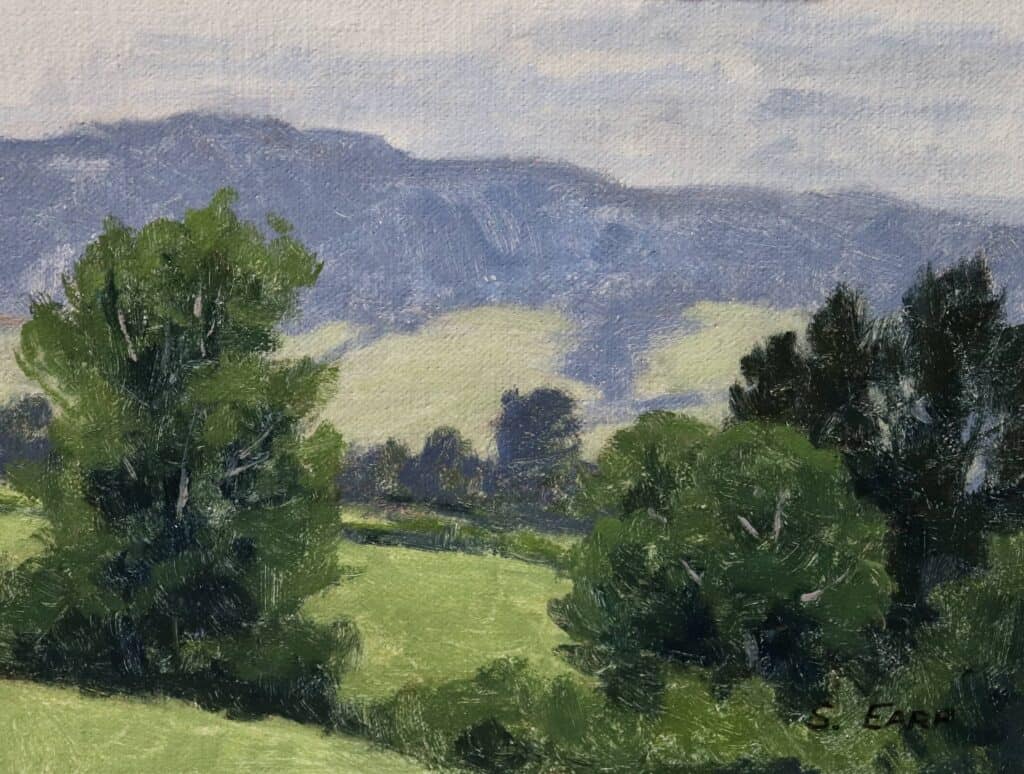
Painting quickly encourages a loose and expressive brushwork style. By embracing the challenge of working rapidly, you become more attuned to the spontaneous gestures and motions that translate into dynamic brushstrokes.
These bold brushstrokes can infuse your paintings with energy and movement, bringing your subjects to life.
Taking reference photos
Capturing reference photos can be a valuable tool for plein air artists looking to enhance their painting process. When painting outdoors, I find it helpful to take a few pictures with my iPhone that I can refer to just in case the light changes or weather conditions change dramatically.
It is well worth taking some reference photos of the scene you are painting with a DSLR camera in case you want to develop the idea further in your studio. This is where you can use your plein air painting as a reference along with your photos.
Your First Paintings Will Suck!: Embracing the Beginner’s Struggles in Plein Air Painting
Starting your journey in plein air painting might initially feel overwhelming and frustrating. The reality is your initial attempts are unlikely to produce masterpieces. Please don’t feel bad about it; this is essential to the learning process. Instead, ’embrace the suck.’
Recognize that each painting, regardless of the outcome, brings you one step closer to mastering the genre. Remember, each ‘failure’ is a pathway to improvement.
How to Overcome Your Fear of Painting Outdoors
So you may be at the stage now where you want to try plein air painting, but the thought of painting outdoors has you shaking in your boots. Well, fear not, my friend! Here are some tips to help you overcome your fear:
1. Start Slow: Don’t throw yourself into the deep end immediately; start by painting in a familiar environment where it is unlikely that any people will be around. Find a spot near your home or even in your back yard that you find inspiring.
2. Have a Plan: Before heading out, ensure you have all the materials and supplies you need. Make a list of items to bring so you won’t be caught off guard by surprises!
3. Take Breaks: Don’t feel you need to finish your painting in one sitting; take as many breaks as necessary. Scoping out the area for potential subjects and admiring nature is a great way to recharge your creativity!
4. Bring Company: If you feel uneasy, bring a friend, another artist, or family member along for moral support. Having someone else present can make all the difference when it comes to conquering your fear of painting outdoors.
5. Find a local plein air painting group. This is exactly what I did when I first started plein air painting. It was really fun to paint with other people.
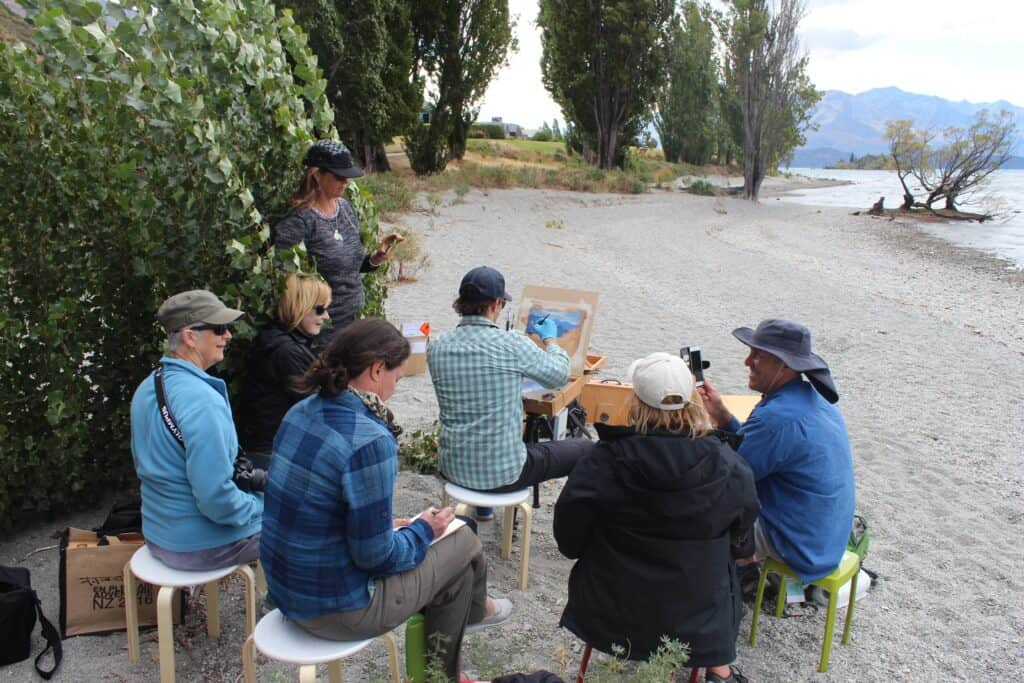
Painting en plein air can be intimidating, with concerns ranging from unpredictable weather and changing light conditions to the fear of judgment from passersby. However, it’s important to remember that these fears are merely hurdles that can be overcome with practice and a shift in mindset.
Watch the YouTube Video
Conclusion
Plein air painting is an excellent way to challenge yourself artistically, fast-track your painting skills and practice your craft in the natural world around you. It can also provide a much-needed escape from the hustle and bustle of everyday life.
By being mindful of your fears and preparing for them accordingly, you can navigate any issues and focus solely on creating beautiful artwork. Plein-air painting can be like a diary of your life in paintings and be an unforgettable experience. All it takes is a little courage to get outside your comfort zone!
If you want more help understanding how to capture landscapes on canvas, make sure to check out my painting videos for guidance.
